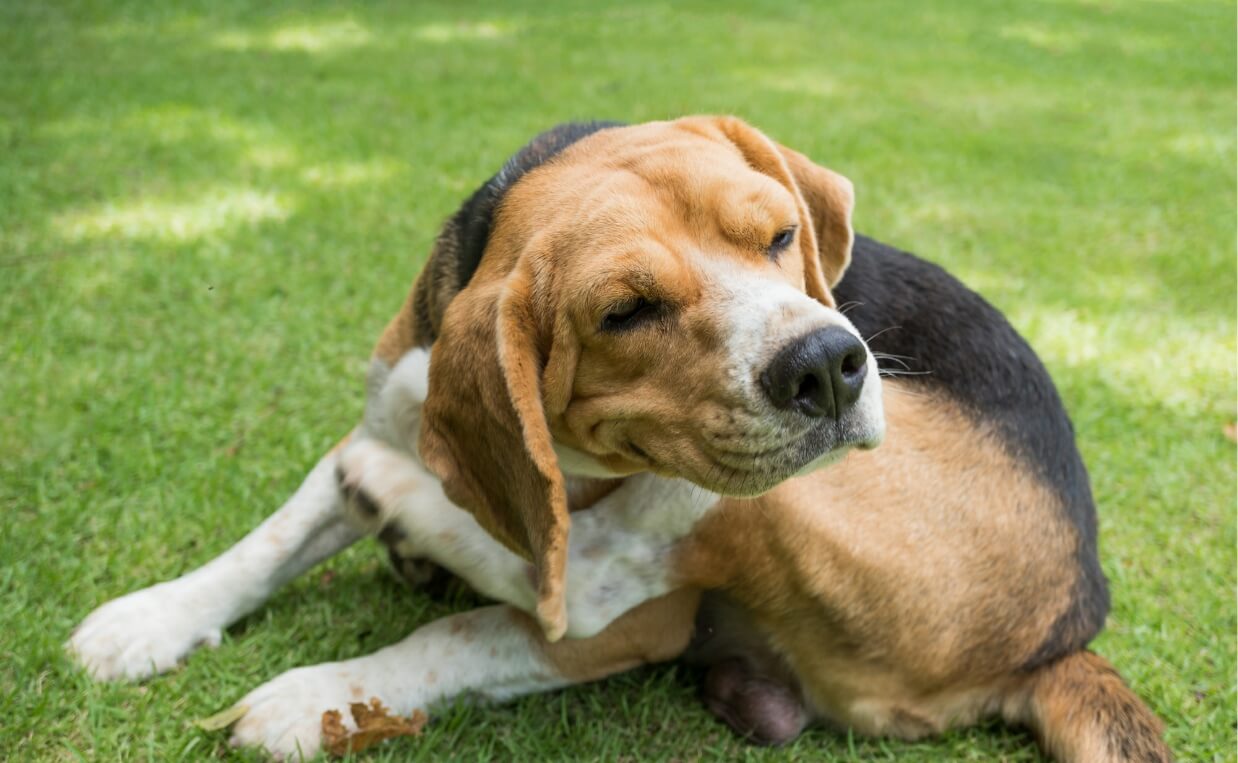
Dog dandruff is a common problem and has many potential causes. If you’re noticing white flakes on your dog’s fur, you may want to figure out the cause and best treatment for your dog.
It’s important to note dog dandruff can be a sign of other problems, so it’s a good idea to get your dog checked out by a veterinarian if you’re noticing a change in your dog’s coat.
What Is Dog Dandruff?
Dandruff is generally a secondary symptom for an underlying condition, like allergies, serious skin problem or certain genetic disorders. Dandruff, or seborrhea dermatitis, is a skin disorder that causes scaly, flaky, itchy and red skin. It typically affects the back, face and flanks on a dog and will generally be worse in the folds of the skin.
There are two types of seborrhea in dogs.
- Seborrhea sicca – dry seborrhea
- Seborrhea oleosa – oily seborrhea
Most dogs will have a combination of both dry and oily seborrhea.
What Are the Clinical Signs of Canine Seborrhea?
In dogs, seborrhea usually affects the skin along the back. The affected areas usually flake off in whitish scales, which is what we know as dandruff. You will see the white flakes on your dog’s bed and other places your dog lies.
Some skin areas may be red and inflamed, with either a dry or oily feel to the area. Many dogs will have an odor associated with seborrhea. This order will become worse if the lesions become infected with a bacterial or yeast skin infection.
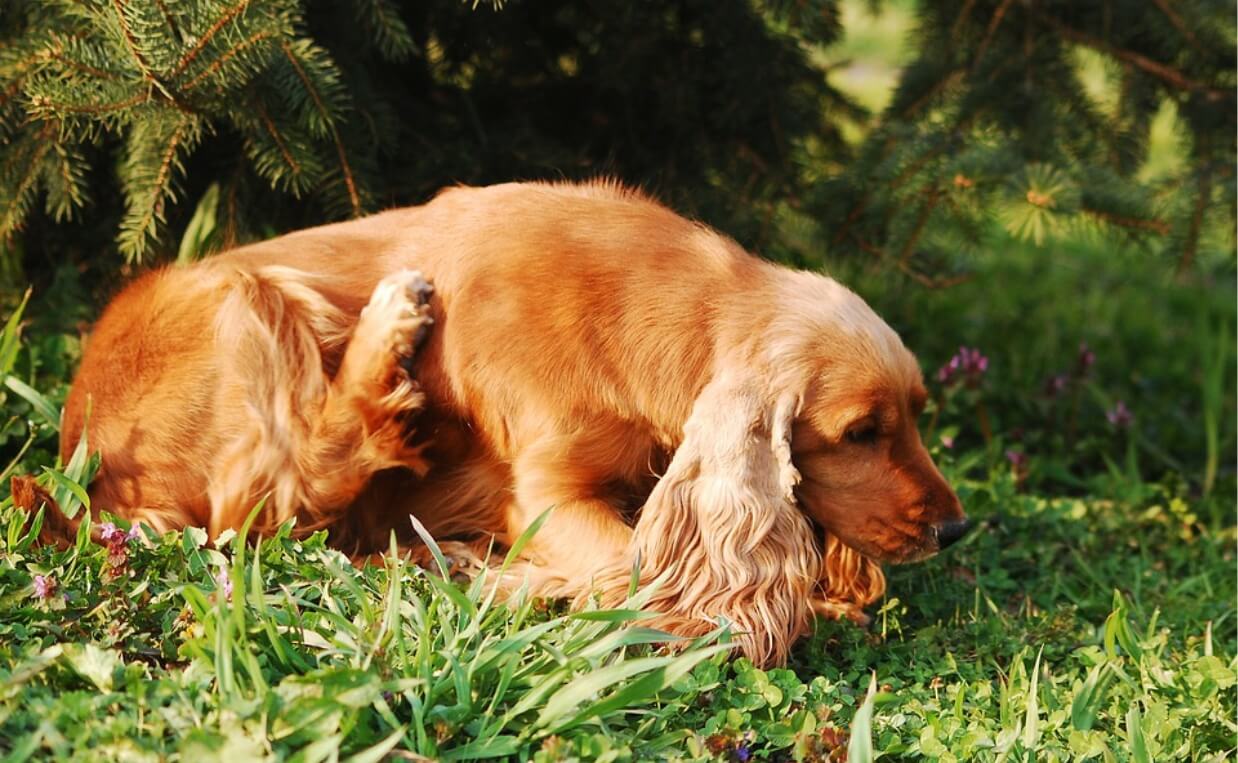
What Causes Canine Seborrhea?
Seborrhea can be a primary or secondary condition. Primary seborrhea is inherited and occurs in certain breeds, such as:
- Cocker Spaniels
- West Highland White Terriers
- Basset Hounds
- Daschunds
- English Springer Spaniels
- Laborador and Golden Retrievers
- German Shepherds
There is a genetic condition called Ichthyosis that causes the skin to become really flaky. Golden Retrievers and American Bulldogs are predisposed to Ichthyosis.
But, in general, any breed of dog can develop a case of dandruff. It can happen in any dog because there are so many potential causes.
Secondary types of dandruff can be caused by these underlying conditions:
- Allergies
- Internal or external parasites (Demodex, Cheyletiella)
- Bacterial or yeast infections
- Certain endocrine disorders (hypothyroidism, Cushing’s disease)
- Dietary abnormalities
- Obesity
- Environmental factors
The winter can be an especially challenging time for dogs who are susceptible to dandruff. Low humidity amplifies skin conditions.
Spring and summer may be a tough time for dogs who have dandruff caused by seasonal allergies.
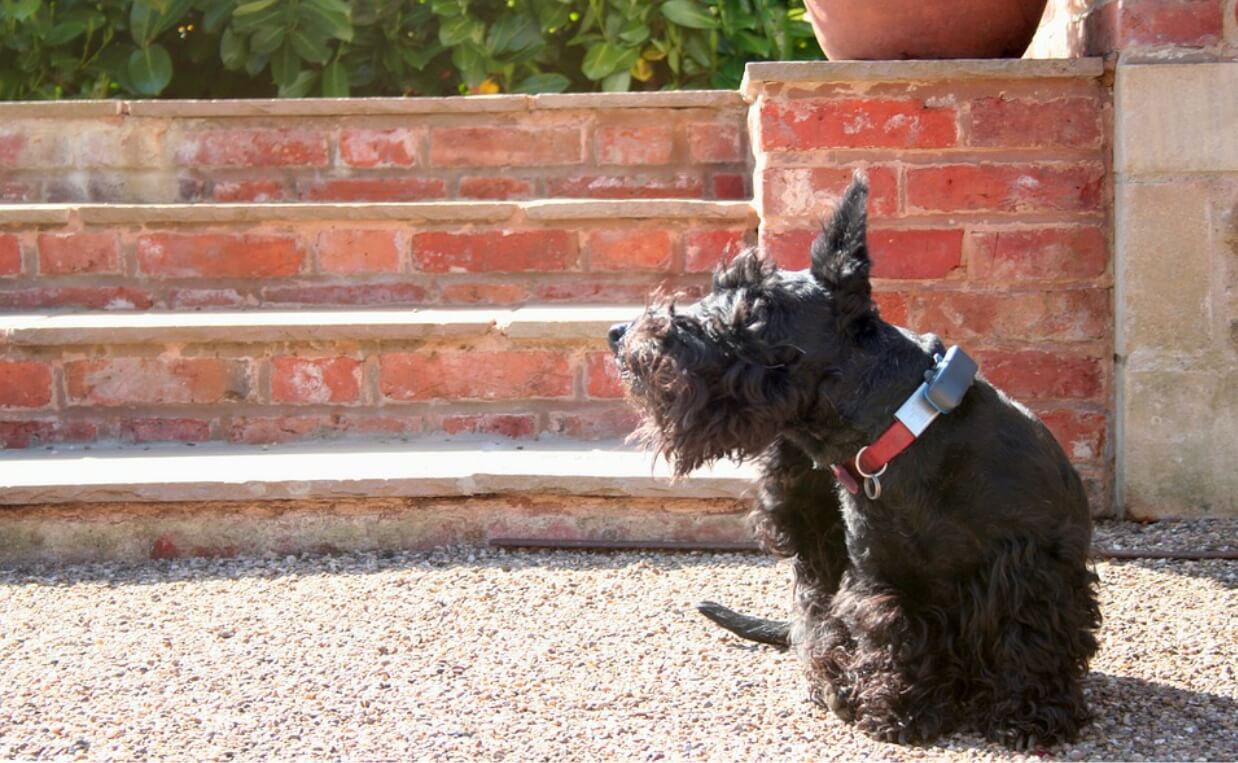
Symptoms of Dog Dandruff
Everyone, humans and canines, occasionally have flaky skin. A few flakes here and there are nothing to be concerned about.
However, if you’re noticing lots of flakes on your dog’s coat, its time to figure out what’s going on.
Here’s what to look for:
- A considerable amount of flakes
- Seasonal patterns
- Itching or discomfort
- Redness or odor
Common Treatments for Canine Dandruff
Most dogs who have dandruff will have an underlying issue, like allergies, a skin infection or endocrine disorder.
Here are some common treatments for these causes.
-
Allergies
While environmental allergies are most common, food allergies can also cause itchy, flaky skin in dogs. Most veterinarians will work with the family to rule out a food allergy first and then address an environmental cause. Usually, if the cause is food-related, a diet change may be in order.
-
Skin infection
Yeast or bacterial infections, particularly with the presence of staph, can cause dandruff. These types of infections are usually a normal part of the dog’s skin, so they’re not picking them up from somewhere else. Skin infections are usually treated with topical antiseptics or oral medications, depending on the severity of the infection.
-
Immune-related disease
There are certain immune-mediated diseases, such as sebaceous adenitis, caused by the immune system. These diseases destroy the oil glands in the skin so veterinarians replace the oil with topical treatments. Sometimes veterinarians will prescribe oral medications to help suppress the immune system.
-
Endocrine disorders
Examples of endocrine disorders include hypothyroidism or Cushing’s disease. Usually veterinarians will prescribe a thyroid hormone or oral medication.
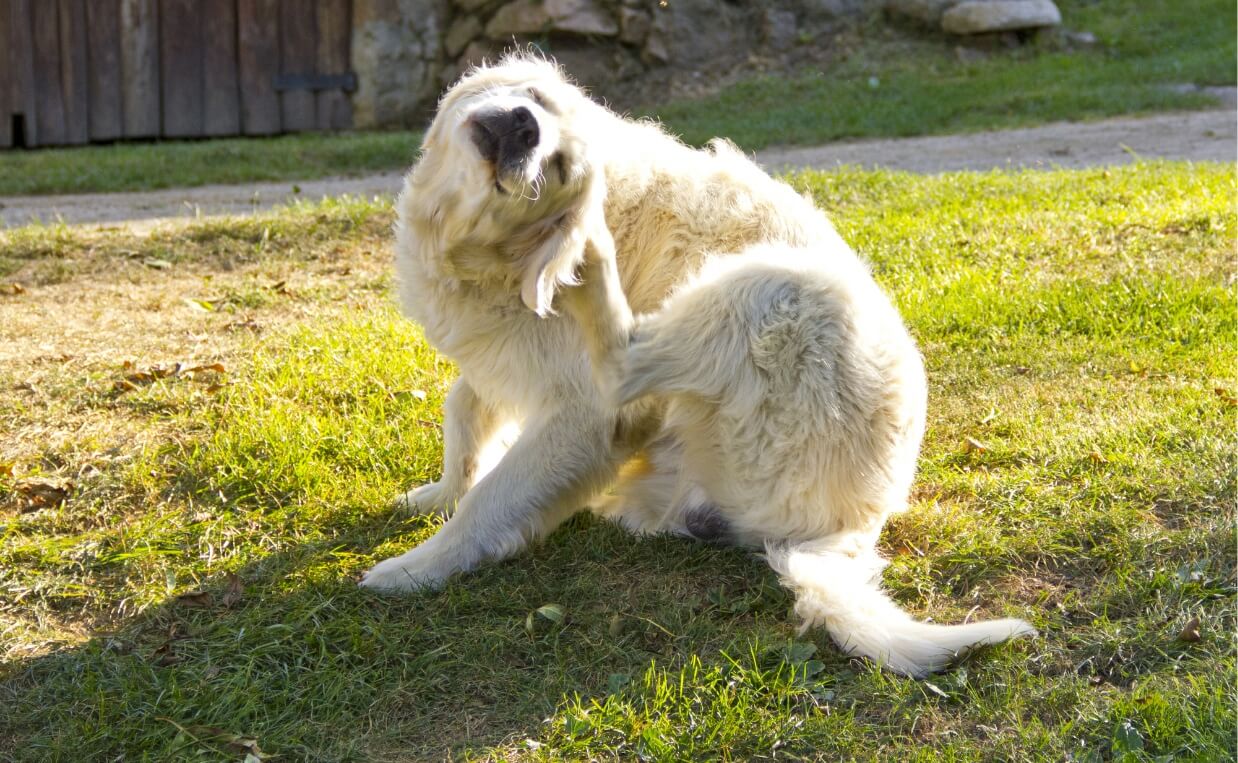
Common Home Remedies for Mild Dandruff in Dogs
If your dog has a mild case of dandruff, you can try home remedies. But if your dog has a medium to severe case, it’s best to have them seen by a veterinarian to rule out any underlying condition.
Here are 5 home remedies to try:
-
Regularly brush your dog’s coat
Grooming your dog helps to distribute the coat’s natural oils and massage the skin. It’s a good idea to make this a regular part of your dog’s routine care.
-
Use a humidifier in your home
Low humidity (definitely an issue here in Colorado) can have an impact on dog dandruff. It’s a good idea to keep a humidifier going, especially in the area where your dog sleeps. Increasing the moisture in the air can help prevent or counter seasonal dandruff due to dry skin.
-
Ask your vet about omega-3 fatty acids
Omega-3 fatty acid supplements promote canine skin and coat health. Just be sure to check with your veterinarian before feeding your dog any supplements or vitamins.
-
Use an anti-dandruff or soothing oatmeal dog shampoo
An anti-dandruff dog shampoo can help mild dandruff. Just be sure it’s made for dogs because the pH of canine skin is different than the pH of human skin. Using human shampoos can make your dog’s skin worse.
Dog shampoos with oatmeal can reduce itching. These types of dog shampoos help to sooth and moisturize dog skin.
-
Feed your dog a good diet
Make sure you feed your dog a balanced diet with the proper nutrients. If your veterinarian has diagnosed your dog with specific food allergies, be sure to keep the diagnosis into account when selecting food. If you’re uncertain about what food you should be feeding your dog, check with your veterinarian. Read more: 8 Trustworthy Tips for Selecting the Right Dog Food
Even if your dog isn’t actively dealing with flaky skin, it’s a good idea to promote healthy skin and fur. However, if you notice your dog is experiencing a worsening condition of dry, flaky skin, make an appointment to have your dog examined.
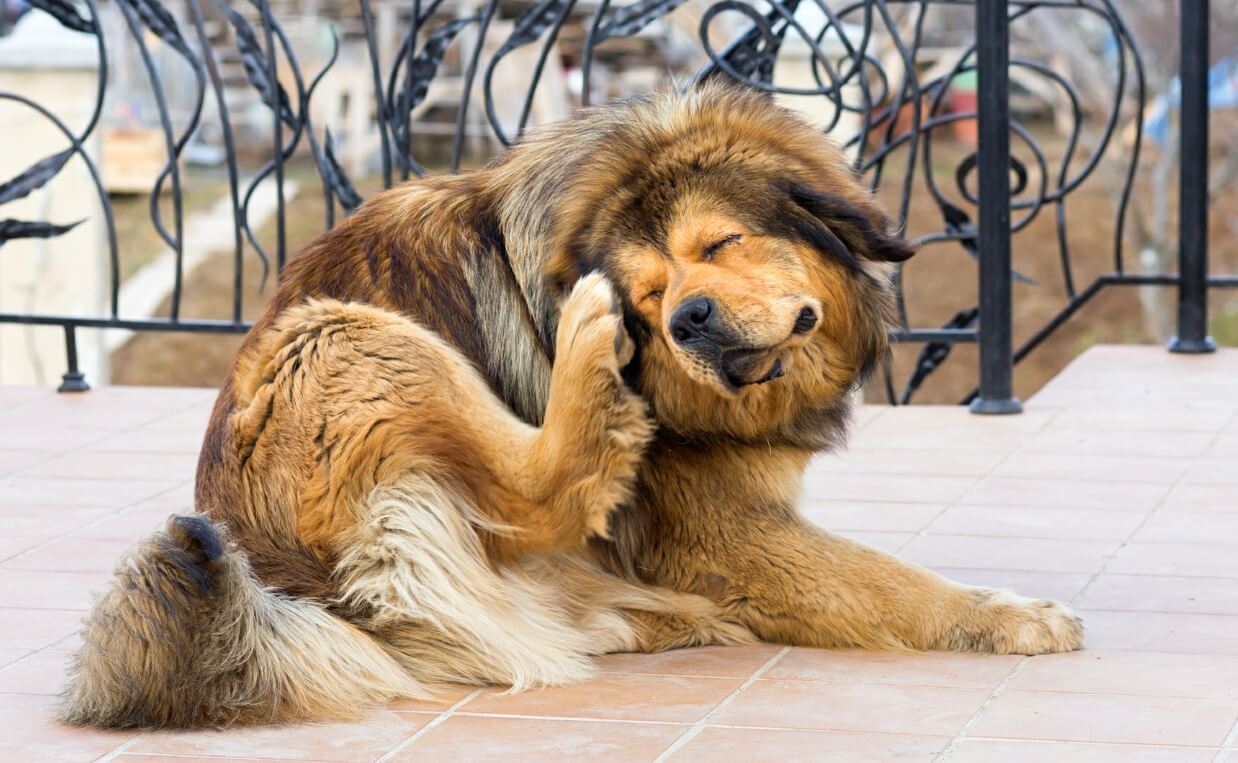
Have you had a dog diagnosed with dandruff? What treatments did your veterinarian prescribe? Please share your experience with the rest of the Canine Campus community in the comments below.

 Exercise-Induced Collapse in Dogs
Exercise-Induced Collapse in Dogs 8 Eco-Friendly Tips for Dog Owners
8 Eco-Friendly Tips for Dog Owners 5 Tips for Preventing Obesity in Your Dog
5 Tips for Preventing Obesity in Your Dog Does Your Dog Have Asthma?
Does Your Dog Have Asthma? How Cold is Too Cold for Your Dog?
How Cold is Too Cold for Your Dog?






My dogs dandruff is just down the middle of his back and he has patches of fur missing. He never itches these spots or chews but they are there. We went holistic on his shampoo making a rosemary water, with coconut oil and Dr. Bronners Castile soap. But even that isn’t working anymore. He has digestion issues so we have to be very careful what we feed him so I think he’s missing a lot of EFAs in his food. Our vet recommended fish oil mixed in his food. He of course does not like the smell so he won’t it eat food with it mixed in. So now I have to get fresh salmon and cook it and mix it in his food and he gobbles it up. The dandruff is a lot less but I see some white flakes and the patches of hair have grown in.
I’m glad to hear your dog’s dandruff is getting better. Thanks for sharing your experience on the Canine Campus blog!